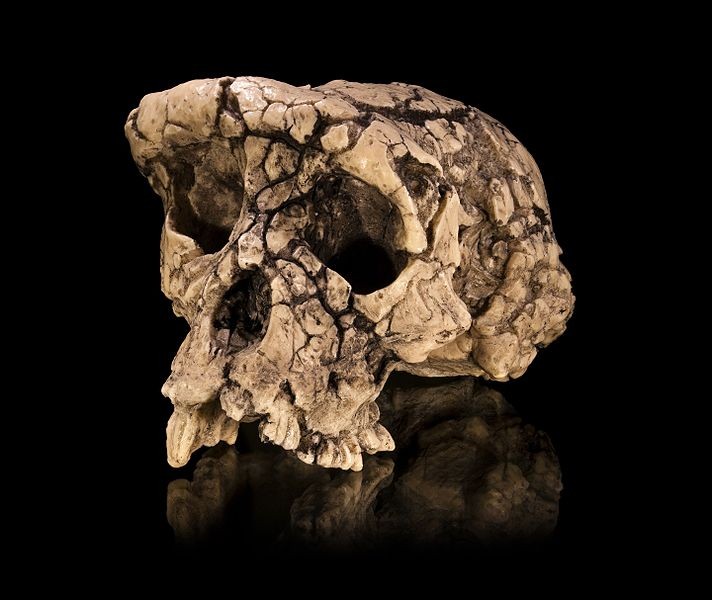Since the discovery of Lucy, considered for almost 25 years and until the 2000s as the grandmother of humanity, then of Orrorin, the oldest hominid found dating from around 6 million years ago, the excavations have resumed with renewed vigor in Africa, the cradle of humanity…
2001

Characters
Mahamat Adoum
Alain Beauvilain
Michael Brunet
Ahounta Djimdoumalbaye
Fanoné Gongdibé
Procedure
On July 19, 2001, in northern Chad, paleoanthropologist Michel Brunet led an expedition to the Djourad desert, where winds break at more than 100 km/h, where landscapes are shaped by sandstorms... and are therefore ephemeral. He is one of the few to dig where nature is all-powerful. It is often necessary to act quickly because the sand reveals and covers in a few hours the rare treasures which could be there. During this expedition, a deformed but complete skull was unearthed by Ahounta Djimdoumalbaye, a great fossil hunter. While two of his colleagues (Beauvilain and Adoum) go north, he follows the one in front of him (Gongdibé), south, when a kind of black ball caught in a black gangue attracts his attention. He discovers teeth not far from there. The ball is attached to a layer of sediment. Turning it over, he realizes it's a skull. Within 500m 2 around, the teams also found several jaws, teeth, etc. After study, this skull belongs to that of a hominid who lived 7 million years ago, supplanting by more than a million years the oldest ancestor of modern man then considered, Orrorin! The scientific planet is turned upside down, and the director of the excavations then baptizes it “Toumaï” which means “hope of life” in the Goran language. He is the oldest representative of the human line.
Consequences
Toumaï upsets knowledge and above all pushes back the date when the man/ape divergence took place around 6 million years ago, it was thought…. It also calls into question the “East Side Story” theory established by Yves Coppens which explained that it was a climatic upheaval in the Rift Valley in Kenya that would have been at the origin of the human/ape dissociation. Indeed, Toumaï was found in Chad, far too west of the region where climate change would have taken place and therefore this divergence, necessary for a need for survival. It leads scientists to establish a new species:Sahelanthropus Tchadensis , the closest to the origin of the chimpanzee/homo divergence. In addition, this discovery clarifies a little more the geographical origins of the cradle of Humanity which seems to have hatched in Chad, until a new hominid may appear!
